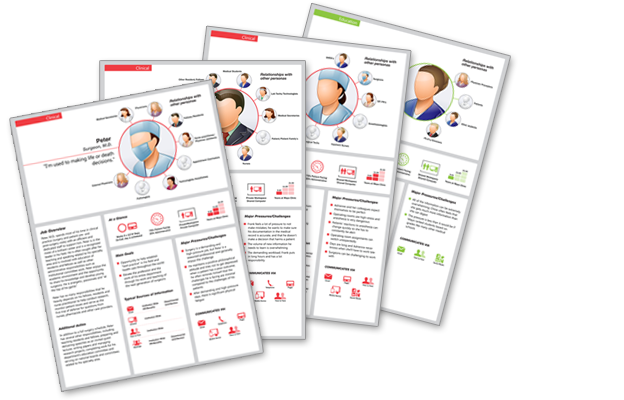Ever since the Persona was first documented in Alan Cooper’s 1998 book The Inmates Are Running the Asylum, it has become a staple in the world of interaction design – and more recently in workplace communication and engagement.
What would Cynthia do?
Personas were developed as a way of understanding the needs of software users by building rich profiles of people with similar motivations and preferences and grouping them to form fictional archetypes. Using role-play scenarios, developers could speculate how an archetype might respond to an interface design. For example Cynthia might represent females over 65 who primarily use the internet to connect with family and socialise. The more we know about Cynthia, the more we can imagine ‘what would Cynthia do?’
The use of personas to predict behaviour is firmly entrenched in the science of consumer marketing. We know that we are regularly analysed, categorised and sorted according to our place of residence, social and financial status (to name a few parameters), particularly when it comes to online and social media interactions.
Consumers in the workplace
The deep analysis and detailed segmentation once reserved for organisations with the means to conduct consumer research, has gradually been turned inward and applied to employees; partly to understand needs and motivations and partly to better manage performance.
Just as market researchers seek to influence consumers to buy, workplace leaders are charged with ensuring employees achieve KPIs without compromising their wellbeing. It’s a delicate balance that marks a shift in management styles away from seeing employees as human resources to acknowledging them as human beings with complex needs. The ubiquitous Human Resources department may have morphed into People and Culture, but how much has changed?
The rise of personas
In 2013 the Mayo Clinic used researched-based personas to create more meaningful user experiences for staff who depend on its decentralised system of local intranets. What began as a tool to ensure a user-centered design process in a not-for-profit practice grew over four months (and 560 hours of interviews and workshops) into 40 personas to guide communication to more than 60,000 employees. Each persona defines a set of characteristic traits and behaviours commonly found in a given staff group.

Examples of the Mayo Clinic persona posters
Mayo Clinic staff are reportedly big fans of the personas, which are displayed as posters in staff areas. This may be because they’re tangible proof of management’s commitment to understanding their needs and concerns, or because it helps them better understand colleagues from different craft areas. A unifying effect could be useful for mitigating the physical dislocation from colleagues common in large, geographically dispersed organisations.
Personas have also been embraced by corporate behemoths such as Apple, Google and Unilever.
Better understanding of needs and motivations can lead to more meaningful communication – relevant messages, packaged to appeal, delivered on time, available in our favourite formats. Although personas have proved a valuable tool for understanding diverse communities, their usefulness depends on the quality of the data underpinning them and the skills of the data interpreter who must balance the general and the particular to create credible archetypes.
by Alan Fitzpatrick